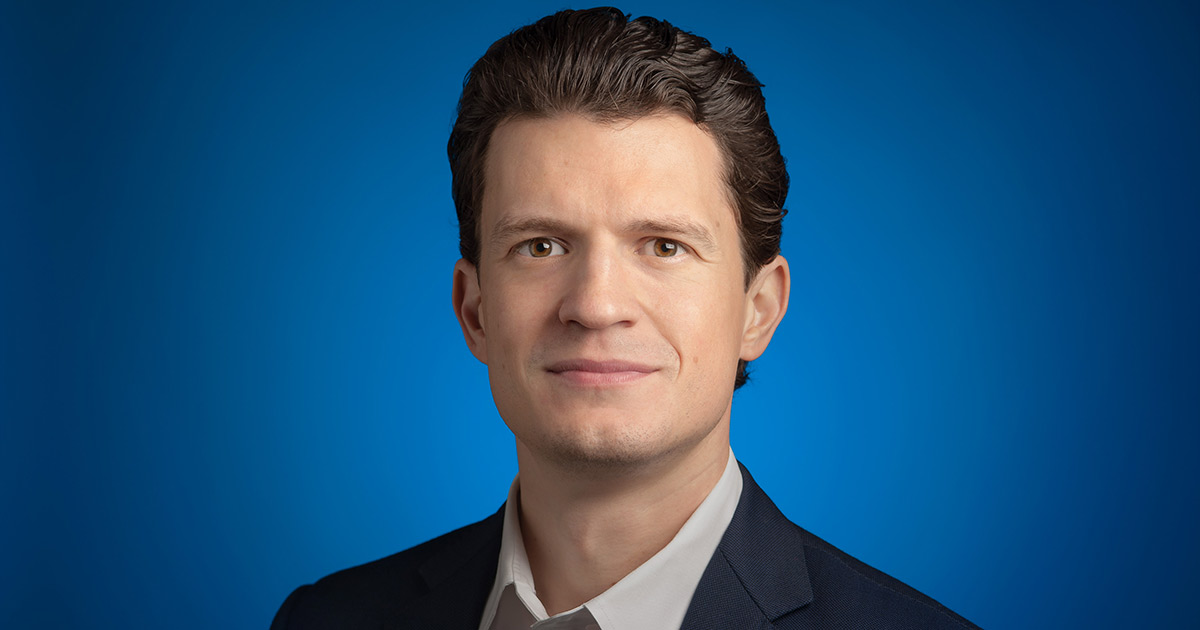Google’s Neil Hoyne Shows You How to Convert Data Into Customer Insights
Neil Hoyne of Google urges radical common sense for using data to better serve the best customers.

Neil Hoyne Climbed to the Top of the Data Mountain to See Why Most Digital Marketing Fails
Google's chief measurement strategist, Neil Hoyne, knows a thing or two about why digital marketing campaigns aren't very effective.
Most companies focus entirely on customers' initial transactions, and they treat them all the same each time they come back. It's no wonder loyal customers don't feel any love, he says. Countless executives invest in customer relationship management (CRM) systems to help their business, yet they don't actually use them to optimize their relationships.
Instead, they prioritize the gathering of more and more data but don't know how to apply it meaningfully, so real-world results continue to be mediocre.
"I’ve seen the most brilliant data scientists in the world spending all of their time capturing and cleaning up data as their companies wait until it's 'perfect,' without ever considering the outcome: how to acquire and develop better relationships with their most valuable customers," Hoyne, the author of “Converted: The Data-Driven Way to Win Customers' Hearts,” told Startup Savant. "This is where startups have a big advantage. They are comfortable knowing they can’t compete on their volume of data, but rather how they apply it.”
Hoyne grew up in South Side Chicago and had a hobbyist's curiosity about how to solve problems on the family computer, but after frying it a few times, he knew he didn't have the magic touch with the hardware. He did believe that technology could be an invaluable asset to businesses, but the theory was still far-separated from the application. He decided to focus on a way to apply data analysis for a practical result and graduated with a degree in marketing in 2003.
He also had experience as an entrepreneur while in school, founding a digital marketing consultancy, using outsourced programmers to help convert traditional business functions into new digital processes at Fortune 500 firms. But as the market flooded with new entrants, driving costs down, he took a step back, moving to Los Angeles to earn an MBA at UCLA in 2009.
From 2009 to 2011, he worked for a Silicon Valley startup SourceForge, which built a community for open source software programmers. As a publisher, revenue primarily came from advertising campaigns and sponsorships that Hoyne was hired to optimize for better performance.
"I had a chance to meet a lot of people from Google and was impressed with how brilliant they were," Hoyne recalled. "I thought about what it would be like to be able to contribute to that community."
But his online applications for positions were rejected the first 35 times. Then he tried to apply for five at once. The recruiter in charge of hiring for these called him to ask which job he really wanted. "Wherever I could make the greatest contribution," Hoyne responded. What he was offered wasn't even posted: Program Manager, Advertising Insights, where he would craft the major analytics initiative that helped clients understand the events that led someone to be converted into a customer.
In 2015, he began a five-year stint as Global Head of Customer Analytics, helping clients understand the results of ad strategies that had been fueled by factors such as knowing Customer Lifetime Value (CLV; the book provides a way to calculate the estimated future purposes for each).
Googling Digital Marketing Solutions
Hoyne now works out of the Google Partner Plex in Mountain View, Calif., and says he was always puzzled by the fact that he would present two clients with identical information, which they would then use to compete very differently.
"Over time, a pattern became clear," he wrote. "Most companies focused on a single moment, a single sentence, a single interaction … using the data to change anything to get an immediate yes — everything was short-term."
That made sense to CFOs, who wanted instant accountability: invest a dollar and get a $10 return. But inevitably, a competitor sprinted ahead with some new advantage, and clients came to Google wondering how to counter this, Hoyne notes.
"I explained they could build their businesses around creating long-term relationships, using data to understand who their best customers were and what products they wanted to buy, leaving competitors with all their data and short-term thinking to poke around in the scripts," he said.
It starts with knowing who your customers are, he wrote. He advises companies to offer incentives that will get them to register, like a coupon, promotion deal, exclusive content, or the option to use a single sign-in provider, like Google or Facebook ID. He notes that personalizing offers (such as using the prospect's first name) produces much better results: open rates of email increase on average by 20% and buying by 31%, while this also reduces unsubscribe rates by 17%.
"Some of the most successful marketers I know spend no more than a couple of hours setting up a basic customer database in the cloud and work from there," he wrote. "It'll be sloppy and it might not scale well, but it's enough to get moving. You don't need a huge CRM when a spreadsheet will do."
He advises clients to be truly curious about customers in learning more about them, such as what could you have done better during the transaction, the hotel stay, the way the product works, or the supporting service? Asking about whether the purchase was a gift or the trip was for business purposes will yield more insights. You don't need to get answers from everyone to the same questions: just 5% responding will be just as valid as 20%.
But restrain yourself from asking too many questions: one real estate company Hoyne worked with asked 73 questions at the start of every digital conversation. A lot dropped out by question 20, and all the questions yielded far more data than the client needed to draw conclusions.
Finding Your Most Valuable Customers
What companies usually find in their exploration is that 20% of customers provide 80% of the value (known as the Pareto Principle), he noted. To ferret them out, you must estimate everyone's CLV.
That alone explains how absurd it is that so many digital marketing decisions are made based on the average response numbers that lump the most profitable customers together with those that are actually costing more money than they're worth. The more coupons, cross-selling deals, and giveaways you offer the latter, the greater the loss. You don't have to be mean to them because they might change, but stop digging the hole, he says.
Yet there is another unexpected mistake in treating all the best customers the same, he points out: those that have been most valuable in the past might be nearing their predicted CLV. Spending a lot on incentives to try to save them would be as foolish as continuing to cater to those who have never been profitable.
Hoyne provides research to support his assertions, including the astonishing fact that only 6% of marketing decisions are based on data. Half are made based on personal experience or intuition, 10% on what the boss wants, and 10% on the opinions of colleagues. The other quarter is made up of 2-3% groups, like industry case studies and business school colleagues. How could so many brilliant and credentialed people effectively just throw dice?
"You'd be surprised at how many big companies that are household names don't really know how to be effective with digital marketing," Hoyne said. "Business schools don't really prepare students for the real world and too much focus is put on quarterly results. If leaders don't make the case to Wall Street for why a longer-term strategy is better for the bottom line, they'll attract short-term investors."
There is a huge opportunity, he says, for companies of any size to do digital marketing right.
About the Author

Scott S. Smith has had over 2,000 articles and interviews published in nearly 200 media, including Los Angeles Magazine, American Airlines’ American Way, and Investor’s Business Daily. His interview subjects have included Bill Gates, Richard Branson, Meg Whitman, Reed Hastings, Howard Schultz, Larry Ellison, Kathy Ireland, and Quincy Jones.
Startup Resources
- Learn more about Startups
- Visit the TRUiC Business Name Generator
- Check out the TRUiC Logo Maker
- Read our Business Formation Services Review
- Find Startup Ideas
- Explore Business Resources
Form Your Startup
Ready to formally establish your startup? Click below to read our review of the best business formation services!
Best Business Formation Services